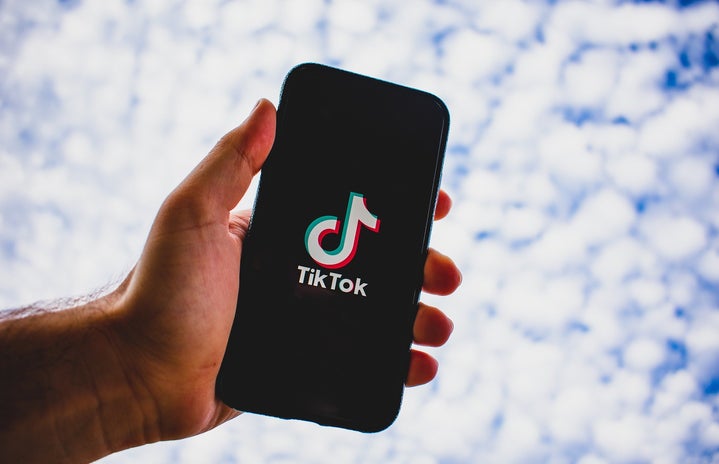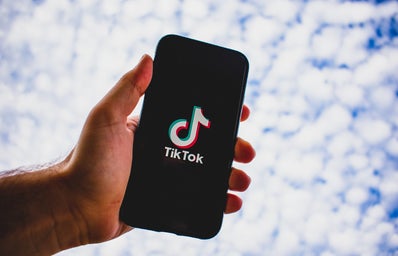Almost like clockwork, new trends and waves of videos grace our Tik Tok ‘For You Page’ every week or so, leading us to instantaneously absorb the latest product or dance or craze, capturing the attention of ourselves and our money.
But one of the latest phenomena to land has been much more unique: ‘#corecore’/’#nichetok’ videos. Across the internet, various journalists and commentators have described them as an ‘aesthetic’, a ‘meme’, an ‘artistic movement’ and as a ‘trend’. But what do these videos actually mean? Do they evoke genuine responses and promote real change? Are they simply a new form of “Gen-Z’s obsession with self-pity”? What does it reveal about young people’s engagement with social media?
Rather than simply being sh*tpost compilation videos, corecore videos are distinctively made with the intent of evoking strong emotion, exposing the underbelly of a particular practice, movement or institution, enlightening viewers about certain truths and (potentially) invigorating them to mobilise for particular causes. They sometimes are more personal and aim to incentivise viewers to improve their lives, often including ideas of seeing the ‘bigger picture’ to prompt self-motivation. However, sometimes, they do not have a clear intent, but rather simply showcase a particular theme or themes through the medium of video and photo compilation.
But how successful have they been in achieving their aims?
Has this trend fizzled out as quickly as it arose? Is it simply just that – another trend?
A typical corecore Tik Tok contains a movie, podcast or documentary clip (or a series of them) with a melancholic, slow song in the background, often followed up by emotional clips, perhaps screenshots of comments, or articles, or videos of nature, space, people – a variety dependent on the theme.
A search for ‘core core’ on TikTok leads to a variation of suggestions: being a girl, autism, depressed, female rage, mental health, nature, LGBT, loneliness, consumerism, climate change.
There are even different strands of ‘corecore’, such as hope core, which present a similar series of videos but with a positive overlying message, such as:
https://vm.tiktok.com/ZMYQMTQGS/
Or sad core, which act as a sort of polar opposite to hope core:
https://vm.tiktok.com/ZMYQr1wt4/
The question therefore emerges: can a movement with such varying, and often conflicting, themes have any real impact? Are they even supposed to have any impact?
Certainly, some have argued that corecore is transforming important political ideologies into mere aesthetics that lose their meaning: we become desensitised and fail to mobilise through watching these videos, which seem to simply compile both complex political ideologies with people’s pain and trauma into 30 second snippets. Demotivation has become another key criticism of corecore – what is inspiring about videos like this? And even if the viewer is inspired, they lack direct links to charities to donate to or organisations to join or demonstrations to attend, leading many to believe they are simply superficial, surface-level videos that do not promote any tangible impact.
The true value of corecore has been and is increasingly at risk of being diluted and done away with, as ‘Mashable’ editor Chance Townsend claims: “the rat race to recreate content that’s already trendy leads to a dilution of the original purpose of corecore”, resulting in a sort of “revolving door of fads and aesthetics that float by meaninglessly”, as we already see with the dawn of corecore’s steady decrease on the app. Certainly even ‘Tik Tok activism’ has been repackaged into the same trend form; it has become an arena of scoring internet points and often is at times an echo chamber of repeating very similar views that are socially acceptable up until the moment they aren’t.
One of the most popular corecore themes has been social media: oftentimes, these videos will show a user tirelessly navigating social media, or they capture a screen recording of endless scrolling on a FYP, such as:
https://vm.tiktok.com/ZMYQWLawG/
Certainly one is quick to highlight the very visible contradiction and hypocrisy – making critiques of social media through social media certainly seems ironic. Many videos will critique phone addiction, being out of touch with nature, with our communities, families, feelings, etc. but remaining glued to social media, particularly to TikTok, as dystopian, ‘Black-Mirror’-esque, technology-obsessed zombies.
Yet TikTok’s popularity remains; in fact, it grows every day. Even the app’s biggest critics continue to use it – it has proven time and time again that it has such a tight grasp on society, that it is not easy to shake with a singular movement, particularly not one that takes place on the platform itself. It is incredibly unlikely many of us experience our ‘Eureka’ moment whilst watching TikTok-critical videos on the app itself, but rather we continue scrolling, as many comments (“wow *scrolls*”) often reveal.
However, corecore is incredibly telling about the feelings of our generation in particular. Though we are often characterised as being tech-obsessed, phone-addicted, consumeristic individuals, it is equally apparent that a growing number of us despise this system and this lifestyle and are making a conscientious effort to challenge it.
Though they are aesthetics, the rise in Cottagecore or Fairycore, for instance, illustrates a popular desire amongst young people to break away from the status quo and live a more organic, healthier, community-based lifestyle that pushes back against the ‘cog in a machine’ feeling many of us are plagued by.
Though it takes on a wholly different form, the resurgence of particular traditional ideals, such as the tradwife, can also be understood as revealing a similar, though misdirected, angst towards the status quo, being challenged in different ways by many youngsters.
The important growth in young people partaking in radical organisations and movements such as ‘Just Stop Oil’ activism, also illustrates the sense of urgency many of us are experiencing with particular regard to climate change and the destruction of nature. However, there seems to be an equally large proportion of Gen Z who are completely disillusioned from the system, or who entirely lack awareness of the gravity of such issues.
An average scroll on TikTok now bombards us with other young people advertising fast-fashion, makeup, various products and services at cheap prices, particularly now more than ever before with the huge ascendance of ‘TikTok Shop’. In truly dystopian, late-stage capitalist style, we are relentlessly encouraged to purchase so much that we simply do not need; this is increasingly encouraged by our own agemates, who are essentially scouted by companies to advertise and normalise overconsumption to others.
The rise of various ‘cores’ and ‘aesthetics’ and the need to label oneself also demonstrates this: it has becoming increasingly popular, particularly amongst teenage and young girls, to have an identifying label related to our consumption, as writer and cultural critic Rayne Fisher-Quann puts it:
“It’s become very common for women online to express their identities through an artfully curated list of the things they consume, or aspire to consume…
We consume so much, now, that perhaps we don’t know what it means to exist as something unsellable”
As such, mass- and over-consumption have infiltrated the self so much so that we are at the point where our own identities have largely come to be defined by that which we buy.
In the US and UK in particular, the voter turnout of young people in elections (18-29) is relatively low (46% and 50% respectively in recent years): mainstream political engagement seems to be disliked by our generation, who consistently report feelings of disillusionment with the system and a sense of helplessness regarding ‘the system’.
Yet it remains undeniable that youngsters have been leading many political campaigns and agitation efforts globally. Research by the International Institute for Democracy and Electoral Assistance reveals that lower election turnout is often paired with an increase in alternative political participation, for example, occupy movements or the “increased use of social media as a new platform of political engagement”.
Thus, the medium of social media as a means of political activism and expression cannot be wholly discounted and overlooked (that includes corecore videos!). Young Iranians, for example, continue to use social media as a way of communicating to the rest of the globe the horrors occurring in Iran, despite online censorship; it has been an incredibly powerful tool in uncovering the situation first-hand, as well as in creating solidarity and unity with others internationally.
But are we overstating the importance of these compilation videos?
Certainly the political agitation in the average corecore and nichetok video, often curated by users in the West, does NOT resemble or equate to the sheer courage of Iranian protestors risking their lives broadcasting their activism on social media.
Yet it remains a powerful tool nonetheless; it is harmful to disregard the popularity and influence of these videos as merely another TikTok trend. Though it is a ‘trend’ insofar as its rise in popularity has seemingly occurred out of nowhere, it is unique in its nature; it confronts the very existence of the ‘trend’, pushing back against mass consumerism (fast fashion trends) or technology addiction (social media trends) or the upsurgence of online misogyny (Andrew Tate and co.). A very popular comment on such videos is “the less likes, the better the corecore”; implying a common feeling that there is a sense of ‘going against the grain’, challenging norms, paying attention to the ‘underdog’, or those who are marginalised, that is unpopular with wider society.
I believe there is certainly value in this alternative method of social and political expression. Despite not taking the world by storm, I have seen plenty of corecore videos that have inspired an individual (albeit momentarily) rethinking or re-evaluation the self; the popularity of these videos shows the universality of this feeling too. Though they remain an important feature, I believe their ideas can and should be developed further through activism, political participation, advocating further for social and political justice globally; the potential for translating these feelings into tangible change is certainly there and must be realised if corecore is not to be simply another trend.
Although I concentrate on the development of political corecore, it is certainly true that corecore does not evoke a singular emotion, nor are they created with a singular intention, as one comment on a YouTube corecore video nicely summarises: “I love core core. Sometimes, it makes me feel sad, happy, helpless, motivated, angry, frustrated, and at peace all at the same time. There really is no meaning to any of this, and yet I stayed for all 10 minutes of it”. This exact expression of emotional ambiguity is precisely what makes corecore so capturing and immersive for many of us: there is a complex wave of emotions that these videos ignite, which even language cannot pinpoint, making this artistic medium so vital for individual and collective self-expression.


